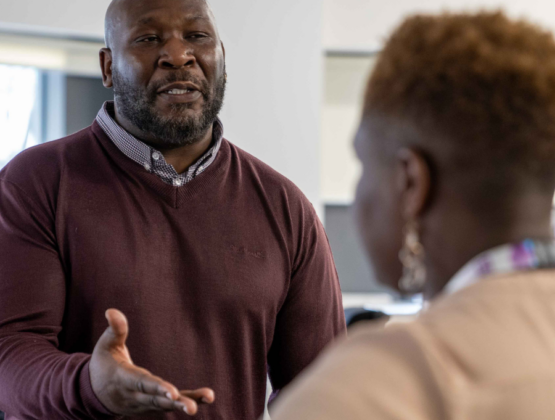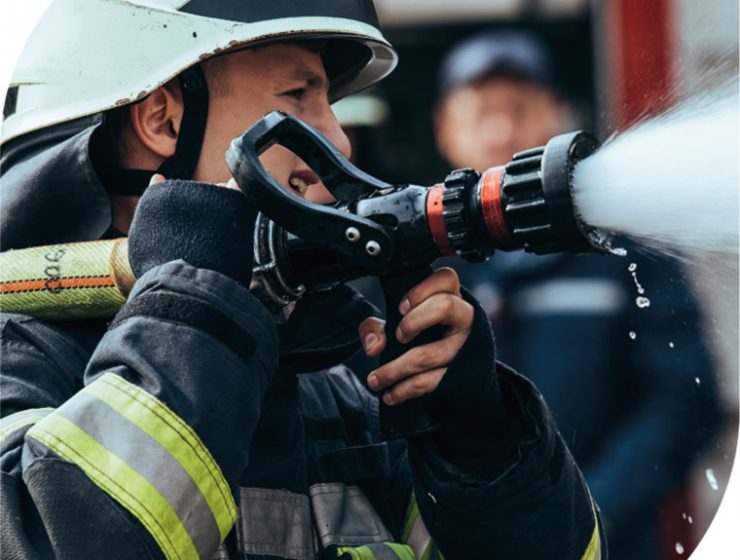Published by Skills for Justice
Key takeaways from the Modernising Criminal Justice Conference 2024
Date 30.07.24

Last month Skills for Justice attended the long-running conference aimed at facilitating conversation around modernising the criminal justice system. The event draws attendees from across the criminal justice system to meet and network with peers, gain insights, and collaborate with industry leaders.
Naturally, technology and AI were at the top of mind during the event, with digitisation of services being the primary way many see the system modernising. There were displays of innovative uses and applications of technology and some fascinating examples of data utilisation.
HMP Peterborough, for example, showed how they track significant events for the detained estates to monitor and proactively manage prisoner wellbeing through data-driven insights. Their system measured how much prisoners were interacting with touchpoints such as visitations, the gym, or meal ordering as a means to identify which prisoners required support.
But interestingly – and something that is close to the heart of Skills for Justice’s mission – there was a strong narrative around people and collaboration. The users behind the technology and data were at the heart of discussions, both justice sector staff and service users.
Here are some of our key takeaways from the event
1. The justice system isn’t collaborating effectively
In one session, the audience were asked if the criminal justice system works together effectively. 57% of respondents said no, with a further 41% saying sometimes. Only 2% of respondents said yes.
When prompted by questions from the audience, the panel of experts dug into the reasons behind these results and a few became clear.
Firstly, there was a lack of shared vision and joined up thinking of how to evolve the justice system and deliver good outcomes. The crowd applauded when one panel member commented that organisations within our sector are stretched and fighting the latest crises, creating a real barrier to having the time to strategise from a holistic view.
Secondly, the lack of shared vision was down to a mindset – or cultural – challenge within the sector. Where government, private, and third sector need to work hand-in-hand, it was noted that the barrier was the government wanting to be on the front foot and set the agenda, rather than openly collaborating with third sector services or private sector specialists.
One of our favourite comments of the day came from the chief executive of the Criminal Justice Alliance – that modernising was not a luxury; it was a necessity. The context in which this was said was that of changing public perception on the use of technology by the detained estate, but it arguably applies across the whole system.
We fully support that government and the public need to accept that modernising the criminal justice system, like with all public sector systems, requires investment and is critical in creating a functioning public service. We cannot deliver justice and protect community safety if the system fails.
Finally, and more positively, whilst it is currently lacking in a system-wide approach, it is very much desired by the workforce. There were many touchpoints throughout the event where we heard from individuals inviting and instigating collaboration with a desire to share their impacts and learn from others. Organisations need to harness this willingness from their workforces and enable it through process and strategy.
2. Learning and development opportunities are running behind
In a session looking at the ‘Skills of the Future’ there was a wide-ranging conversation about how we get the right people, with the right skills, delivering the right services.
Learning and development rightly came out strongly. There were questions on why degrees (including degree apprenticeships) were the main route into policing – something that the new Police Constable Entry Programme looks set to challenge in the future. A change of government sees the Labour Party talking about reforming the Apprenticeship Levy which is likely to change the balance of focus in this area as well.
L&D was also discussed in terms of continuous development – with panel members agreeing that learning should be a regular and relevant exercise on an ongoing basis, rather than an induction. This principle is already in place in sectors like healthcare and should be embedded in justice as well.
What was missing from this discussion is a form of sector resilience: how are we identifying what the skills of the future are? Are we future-proofing the workforce against upcoming changes? It was a strange omission considering one of the panellists said that they recruit people into their organisation with an existing skills gap.
Awarding organisations and employers alike often build training and qualifications based on an identified need or skills gap. But by the time that comes around we’re on the back foot, trying to fix a gap rather than preventing it.
The big questions here that we need to answer are – how do we get a grip on the competencies we will need in the future workforce, and what are the mechanisms by which we will gather and action that insight?
3. Cultural purpose is our unifying factor
Unifying factor or unique selling point – cultural purpose was evident in every session we saw. The justice sector workforce is committed to providing a vital public purpose.
With themes running around technology a common question appeared: How can the public sector keep pace with talent and retention when the private sector is able to out-compete them, particularly on salary?
The answer is that we sell the purpose of what we do. People in the justice workforce feel that they are able to contribute to making a difference. No matter which part we work in, we can see our impact: how we protect community safety, how we help contribute to preventing and reducing offending, and how we support victims and witnesses of crime. This is something that we can do, that nobody else can.
Sign up to receive news and updates from Skills for Justice
"*" indicates required fields




